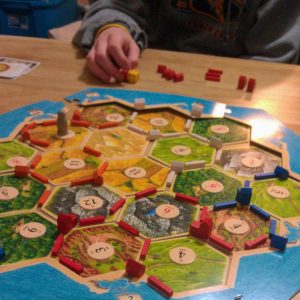Klaus Teuber made Catan, and it changed the world’s expectations for board games

Enlarge / Klaus Teuber, in 2015 at a games festival in Essen, Germany. Teuber created The Settlers of Catan (later just Catan), along with other award-winning board games. (credit: Picture Alliance via Getty Images)
I was in my early 30s when I first played The Settlers of Catan. I had been at a bar with a small group one freezing winter night in 2012 in Buffalo, New York. One of us, eager to share his recent obsession, declared it was time for the outing's next stage. We went to his barely unpacked new apartment nearby. He pulled the game from a plastic tote, opened it on a wobbly dinette table, and laid out the board, apologizing for the moisture-warped edges. I took a picture (on my HTC Thunderbolt) because, having had a few, I wanted to ensure I'd remember this game with the wooden pieces and weird amount of sheep.

Settlers of Catan, as I saw it in early 2012. (credit: Kevin Purdy)
From a German basement to 32 million copies
You may have seen the news this week that Klaus Teuber, the German designer who created The Settlers of Catan (now just Catan), died on April 1 at age 70. Teuber developed Die Siedler von Catan in the early 1990s, playing with ideas of Icelandic settlements, tinkering in his basement while working full-time at a dental lab. He'd bring up new iterations for his wife and kids to test every weekend, he told The New Yorker. The breakthrough, he said, was using hexagonal tiles instead of squares.
Read 12 remaining paragraphs | Comments
from Gaming & Culture – Ars Technica https://ift.tt/xtl6HoF